|
Article by Ben Huber
While Hayao Miyazaki's filmography is well known for the gorgeous art and stunning animation, perhaps the strongest theme running throughout all his movies are the lead characters: they're always wonderful, fleshed out, and compelling women. These aren't Disney princesses, instead, they feel real and honest. Most of all, they're characters, not cardboard cutouts that resemble a person. Let's take a look at the women of Ghibli.
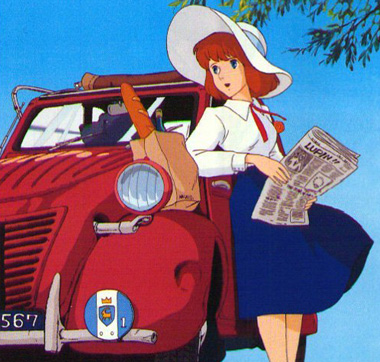
Lady Clarisse d'Cagliostro is the lead female role in Miyazaki's first feature film, The Castle of Cagliostro. However, due to Lupin III being the dominating character, she takes a back seat to much of the action. However, in her quiet, stoic nature, she exudes a maturity beyond her years, showing that even if you're trapped in a castle, you don't have to be the generic princess archetype (although she is the closest Miyazaki ever gets to this).

Nausicaä is also a princess in a pre-Ghibli film, but it's her backstory that's perhaps most interesting. Miyazaki created her to be devoted and self-giving, inspired by the Japanese folk tale about The Girl Who Loved Insects. She was originally named Yala, and had a dog as her companion. This later changed to Nausicaä (taken from the princess in the Odyssey) and Teto became her furry co-traveler. Miyazaki once said that the more he drew Nausicaä, the more he came to know her. That's the mark of a truly fleshed-out character.
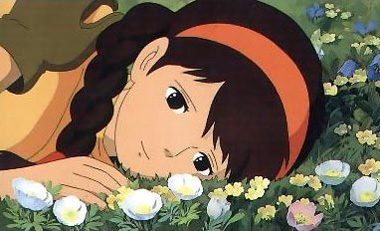
Sheeta is another princess, but everything is falling apart around her - quite literally so. Laputa: Castle in the Sky is one of Japan's most beloved films and even TV re-runs pull in huge numbers, all because of Sheeta and Pazu. The parallels between her and Dola (their similar story arcs) are an interesting bit of hinting by Miyazaki. The iconic robot Sheeta partners with came from an earlier design in a Lupin III episode Miyazaki directed ("Farewell, Beloved Lupin"), which was inspired by the Superman episode "The Mechanical Monster."

While Miyazaki's most beloved creation may be Totoro, it's the two children, Satsuki and Mei, (that he takes on an adventure together) who are the emotional anchor for the story. The most obvious element to note is that despite their young age, Satsuki and Mei aren't helpless children who need adult's aid. The girls elist Totoro in their plans and make use of his magical abilities, but it's Mei scampering into thje woods headfirst, or Satsuki leading the charge to find Mei. Never doubt someone due to their age, Miyazaki seems to be saying. That childlike wonder can come in handy.

Kiki's Delivery Service is another classic that stands the test of time. Kiki, the intrepid young witch, sets out for a year of life on her own. Despite only being able to fly, she cleverly uses this ability to start a delivery service in the skies. The primary male presence is Jiji, her talking cat, who in many ways represents Kiki's immaturity. When she saves Tombo and regains her abilties, she also no longer can speak to Jiji, signifying her growth into a more mature person. It's suprisingly curt (typical of Miyazaki) and this implication was even removed from the US release of the film, as they added an extra line for Jiji. Localization is fun!

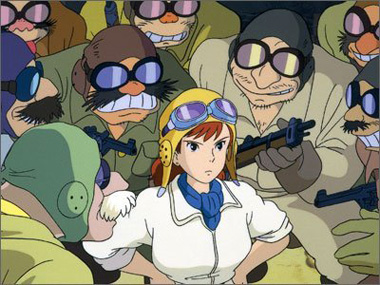
Perhaps Miyazaki's most mature film, Porco Rosso is unique in that a man is the main character, but he has two significant women backing him up: Fio, the excitable airplane mechanic, and Gina, Porco's love interest. While Gina is an interesting character due to her elegance and confidence, Fio is all about defying expectations. Porco initally hesitates at the idea of her fixing his plane, but she quickly proves his preconceptions wrong, skillfully handling the repair work along with a larger crew of other women. It's also implied that her kiss briefly turned Porco's face back, if you go by Curtis' reaction. While most like to focus on the political and social issues raised by Porco Rosso, it's Gina and Fio that are the backbone of the film.
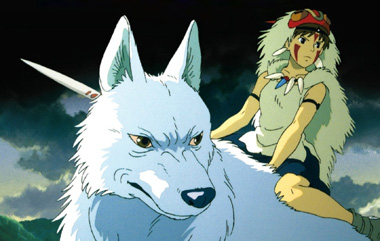
A heavy-hitter for Ghibli, Princess Mononoke has something few Ghibli films have: opposing forces, both organized by women. San and Lady Eboshi are the primary warriors, one striving to protect nature, and the other to advance industrialisation. San's savage nature, while hard for the viewer to intially understand, is never portrayed as a negative. Even Lady Eboshi, who is essentially the antagonist, while doing terrible things, never neatly falls into the category of "villainess." Instead the larger force of nature towers over all, leaving San and Eboshi to both do their best to survive as the world moves independently.
|
|
|
 |
|
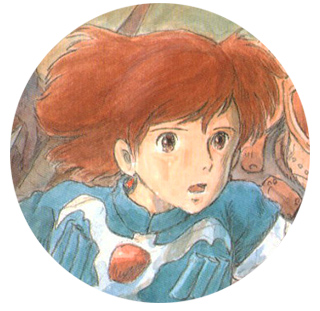

The most popular Ghibli film ever, maybe, Spirited Away is in a lot of ways a culmination of Miyazaki's messages to young women. He stated that he made this movie for his friend's 10-year-old daughter, hoping to give girls a good role model to look up to. Chihiro goes through many struggles, including losing her own name, but through hard work and paying close attention, she overcomes Yubaba's scheming. Her final triumph isn't a battle or a dramatic fight, but a game of wits to identify her parents. Yet, the real story isn't Chihiro getting her name and parents back, but instead finding the courage inside herself. It's often interpreted as a coming-of-age story, but Chihiro doesn't necessarily "grow up" so much as she finds her own innate abilities that she needs to utilize. It's maturity, not "growing up."
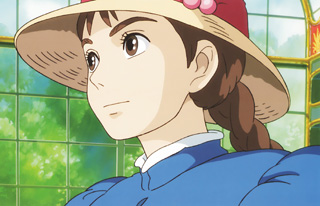
If Spirited Away is for young women, Howl's Moving Castle is for the opposite. Sophie is cursed to transform into a 90-year-old woman, but her determination is never lessened. While Howl is off in the war, or otherwise fooling around, Sophie is doing her best to solve the actual problems. Almost everything in the film happens because she takes action, and rather than moping around like Howl, she fixes things. Miyazaki also firmly emphasizes the wisdom of age and the needed respect of your elders, all in a magical little moving castle.
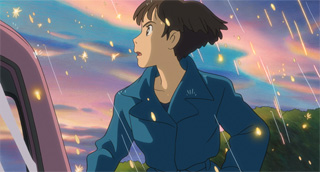
Ponyo is the closest thing Ghibli has made to a straight-up "children's movie" but that doesn't mean that there aren't any important underlying themes. Ponyo's enthusiasm is that of a child, and breaks free from her father, eventually finding friendship in Sosuke. This innocence and reckless attitude causes damage in the form of water, rain, and flooding. While Ponyo is reprimanded, the adults in the film can't help but admire that childlike excitement as well. Sosuke's mother, Lisa, is perhaps the most interesting character in the film, especially due to her relationship with her son and her distant husband. She not perfect, but earnest.

Lastly, there is the younger Miyazaki. Goro Miyazaki worked with his father on From Up on Poppy Hill, a much better film than his first effort, Tales from Earthsea. Umi raises the flags every morning, sending her message out across the bay. Her dedication and effort show through when she and Shun go to meet the school board chairman and convince him to not demolish the Latin Quarter building. She's a bit more honor-bound than the traditional Miyazaki protagonist, but never lets someone stand in her way. Hopefully Goro Miyazaki will continue to grow as a director and create more women as positive role models.

It's hard to deny Miyazaki's effect on how women are written and portrayed in modern media. More and more we see creative characters, that no matter their gender, are real, fleshed-out people, not simply stereotypes. Everyone asks for "strong" female characters, but they never seem to ask about realistic female characters. Failings and mistakes are part of life. Making a perfect woman who kicks ass doesn't solve the problem. You're just trying to overcome a supposed deficit with "awesome." Instead, we should be striving for what Miyazaki has done: make these characters real. Give them flaws and motivations. They cry if they're sad. They get angry. They take matters into their own hands. Make them feel like real people! We have a library of films from Ghibli that have example upon example of how to do this right.
Even Hideaki Anno, the director of Evangelion, loves such characters so much he wishes to create a sequel or reimagining of Nausicaä. Whether that will happen or not is another story for the future to tell. It could be fascinating. But hopefully, no one will complain over more tales about great characters, more wonderful women like her. We could all use a little more Nausicaä.
|
|
|

